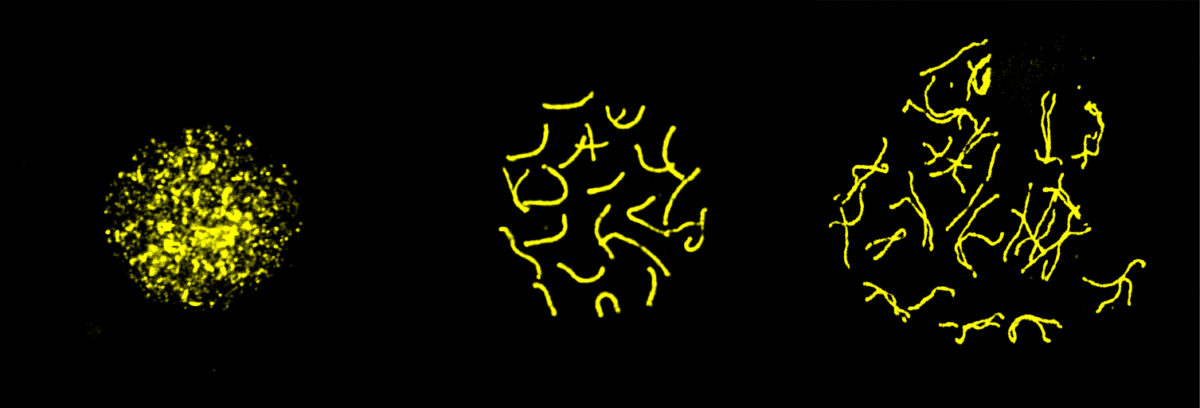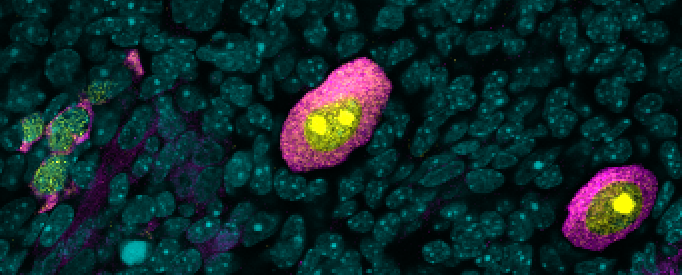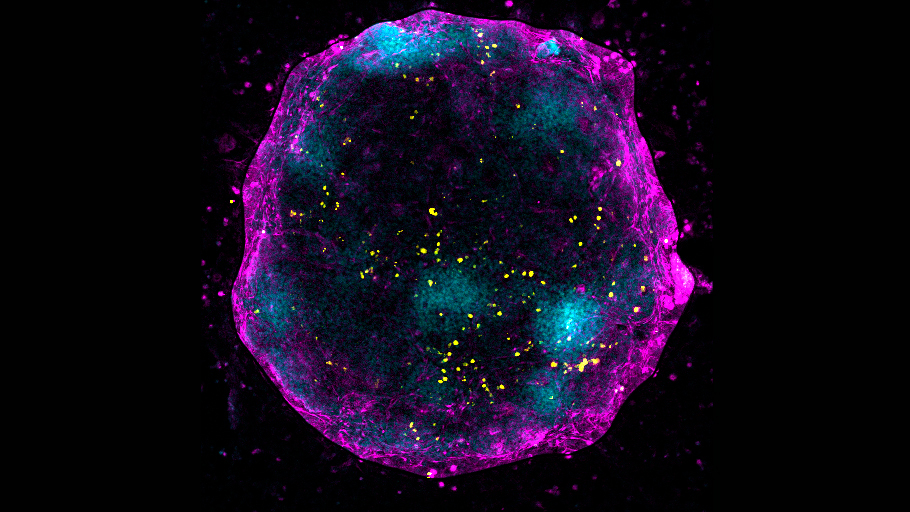This image taken by Jaqueline Severino, tissue engineering facility technician at the Centre for Genomic Regulation (CRG), shows an artificial ovary where in vitro-generated germ cells (magenta) enter meiosis (yellow) to develop into oocytes with the help of supporting cells (cyan). The image is part of the latest study published by Bernhard Payer‘s lab on oocyte development.
Of the 23 pairs of chromosomes that humans have, one of them corresponds to the sex chromosomes. In males, these are X and Y, but females have two copies of the X chromosome. This condition during development can lead to an overdose of gene products that can be fatal if there is no deactivation of the X chromosomes.

Therefore, a team at the CRG has developed a real-time X chromosome tracking system (XRep), which has allowed them to see how it changes shape in the germ cells that will later become mature reproductive cells (eggs). Preliminary in vitro studies with female mouse cells have shown that X chromosomes that have been inactivated and then reactivated are up to 4 times more efficient at transforming into eggs. In contrast, germ cells that fail to activate the X chromosome or that reactivate it too quickly show abnormal patterns of gene expression.
The researchers deduce that the correct sequence of X-chromosome inactivation and reactivation indicates normal germ cell differentiation. They note that further studies are needed to confirm whether this is the cause of the cellular abnormality or an indicator of it.

The present study could open the door to the generation of artificial oocytes in the laboratory, which would allow researchers to study the causes of infertility and test new drugs for this problem. Co-author Mortiz Bauer adds: «Our results also highlight the need for specific tools to study female cells» as most studies are performed on male cells, creating a gender gap in scientific knowledge.
Want to see your photo here? Send us images related to science or life at PRBB a ellipse@prbb.org.
Severino, J., Bauer, M., Mattimoe, T., Arecco, N., Cozzuto, L., Lorden, P., Hamada, N., Nosaka, Y., Nagaoka, S. I., Audergon, P., Tarruell, A., Heyn, H., Hayashi, K., Saitou, M., & Payer, B. (2022). Controlled x‐chromosome dynamics defines meiotic potential of female mouse in vitro germ cells. The EMBO Journal, 41(12). doi.org/10.15252/embj.2021109457






